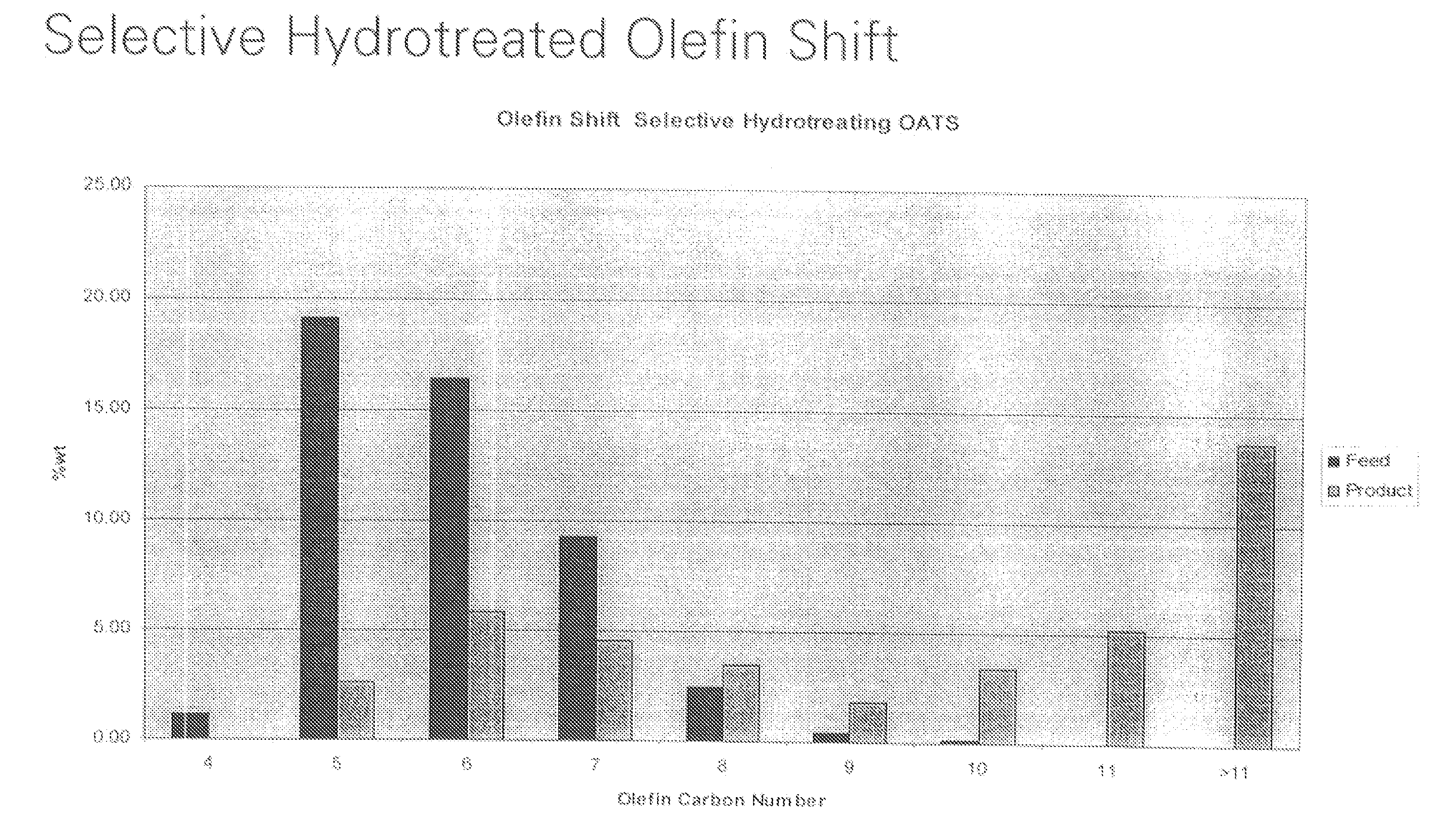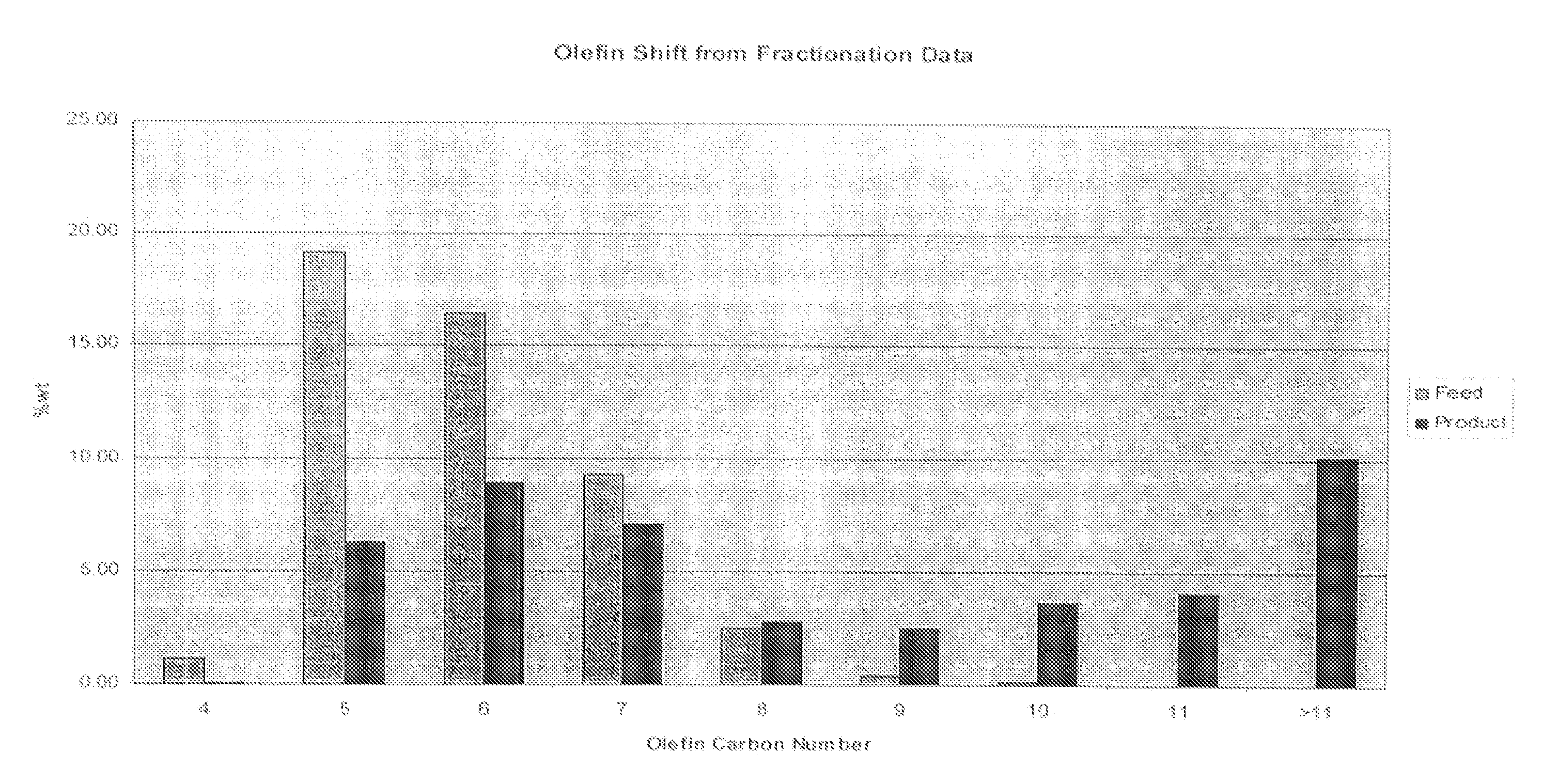Composition for blending of transportation fuels
a technology for transportation fuels and blends, applied in the direction of fuels, lubricant compositions, liquid carbonaceous fuels, etc., can solve the problems of affecting the quality of transportation fuels, and causing smoke in the exhaus
- Summary
- Abstract
- Description
- Claims
- Application Information
AI Technical Summary
Benefits of technology
Problems solved by technology
Method used
Image
Examples
example 1
[0069] This example illustrates formation of alkylated aromatic compounds of the invention. The feedstock is very light and therefore well separated from products. The major olefins in the feedstock are listed, and these give rise to the major high molecular weight aromatic products, likely by electrophylic addition. A detailed break down of the olefins in the feedstock and alkylated product is given in Table 1.
examples 2-7
[0070] These examples illustrate a gasoline fuel composition of the invention. Table II presents PIANO analysis of both the low-sulfur fraction (100-) component of the gasoline fuel composition of the invention and the fraction (100-) of the alkylation feedstock used in blending of the reference fuel.
[0071] Table III presents selected properties of both the low-sulfur fraction (100-) component of the gasoline fuel composition of the invention and the fraction (100-) of the alkylation feedstock used in blending of the reference fuel
[0072] Table IV presents blend compositions and selected properties of both the gasoline fuel composition of the invention and the reference fuel.
[0073] Table V presents inspection results for both the gasoline fuel composition of the invention and the reference fuel.
[0074] Table VI presents a summary analysis of both the gasoline fuel composition of the invention and the reference fuel as measured by ASTM D1319(1995).
[0075] Table VII presents the res...
example 8
[0081] In this example of the invention the two reactors were charged with the solid phosphoric acid catalyst having particle sizes Tyler screen mesh −12+20, and operated at a liquid hourly space velocity of 1.5 hr−1. Reactor one was maintained at a temperature of about 172° C., and reactor two at a temperature of about 122° C., i.e., a temperature differential between the serial reactors of negative 50° C. Analysis of the process stream is shown in Table VIII. The reduction in the total of 2-methyl and 3-methyl thiophenes was from about 254 ppm to about 3 ppm, a reduction of about 98.8 percent. The total of C2-thiophenes was reduced from about 125 ppm to about 29 ppm, a reduction of 76.8 percent. The reduction in the total of all sulfur compounds boiling at temperatures below 110° C. was from about 184 ppm to about 5.7 ppm, a reduction of 96.9 percent.
PUM
| Property | Measurement | Unit |
|---|---|---|
| flash point | aaaaa | aaaaa |
| flash point | aaaaa | aaaaa |
| vapor pressure | aaaaa | aaaaa |
Abstract
Description
Claims
Application Information
 Login to View More
Login to View More - R&D
- Intellectual Property
- Life Sciences
- Materials
- Tech Scout
- Unparalleled Data Quality
- Higher Quality Content
- 60% Fewer Hallucinations
Browse by: Latest US Patents, China's latest patents, Technical Efficacy Thesaurus, Application Domain, Technology Topic, Popular Technical Reports.
© 2025 PatSnap. All rights reserved.Legal|Privacy policy|Modern Slavery Act Transparency Statement|Sitemap|About US| Contact US: help@patsnap.com



